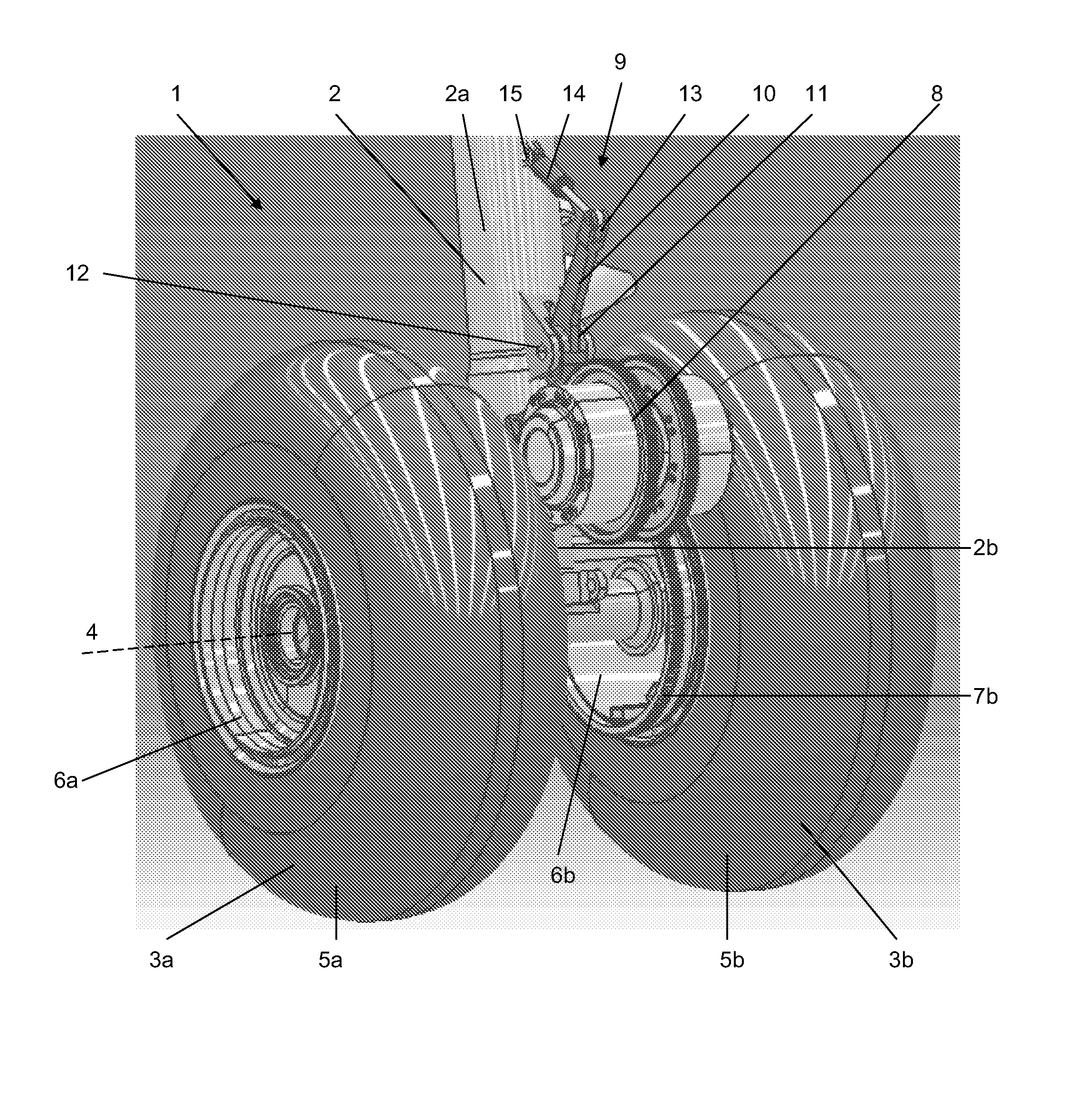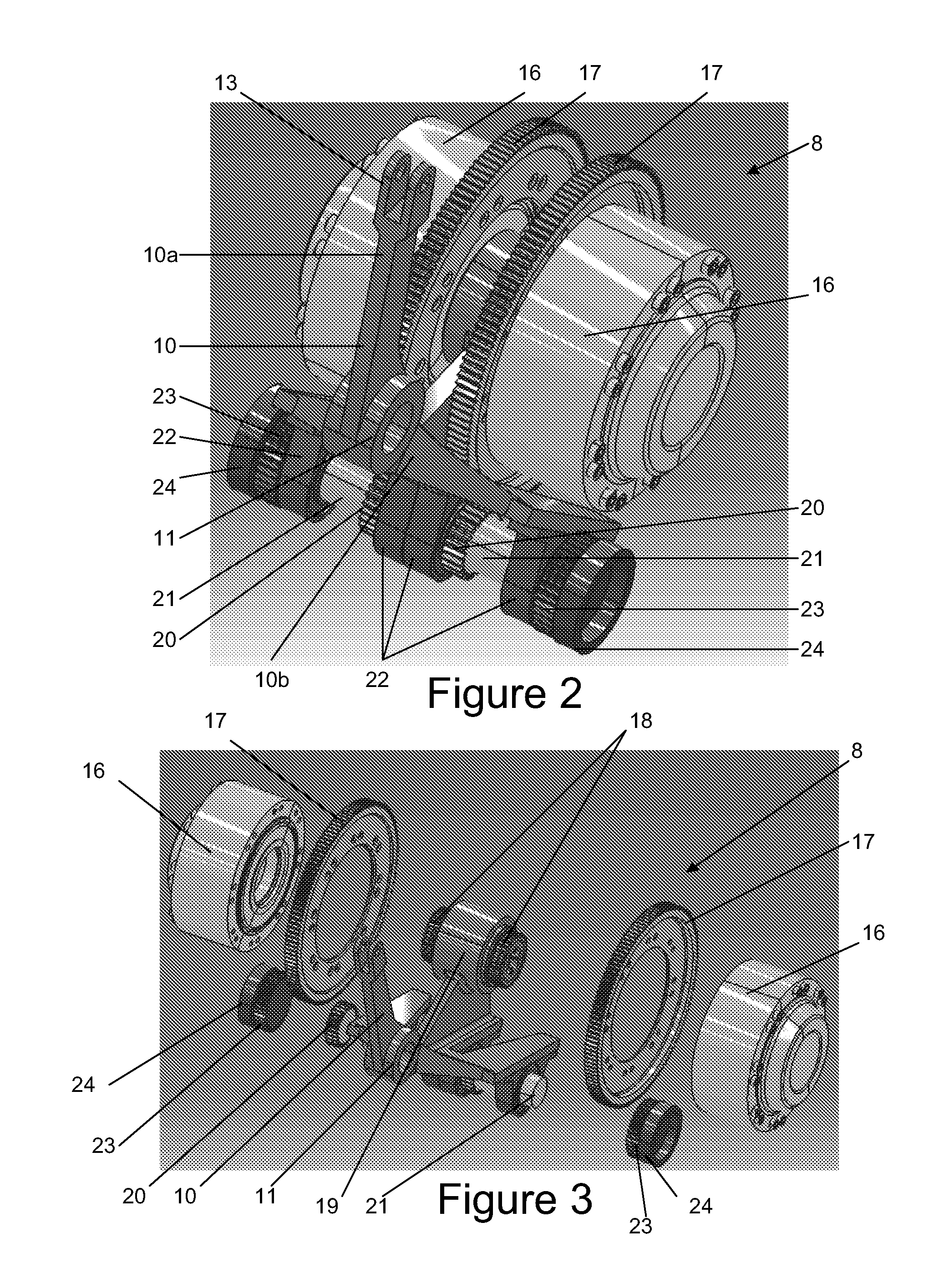Aircraft landing gear
a landing gear and aircraft technology, applied in the direction of alighting gear, skis/runners, energy-saving operational measures, etc., can solve the problems of increasing the level of both atmospheric and noise pollution in the local vicinity of airports, the engine must be run at low power, and the fuel consumption is relatively high
- Summary
- Abstract
- Description
- Claims
- Application Information
AI Technical Summary
Benefits of technology
Problems solved by technology
Method used
Image
Examples
first embodiment
[0040]FIG. 1 illustrates a landing gear 1 in accordance with a The landing gear 1 includes a telescopic shock-absorbing main leg 2 including an upper telescopic part 2a (main fitting) and a lower telescopic part 2b (slider). The upper telescopic part 2a is attached to the remainder of an aircraft by its upper end (not shown). The lower telescopic part 2b supports an axle carrying a pair of wheels, one on either side of the main leg 2. The wheels 3a, 3b are mounted for rotation about a common wheel axis 4 with respect to the main leg 2. The upper part 2a is disposed above the shock-absorbing components inside the main leg and so will hereafter be referred to as the “sprung” part. The lower part 2b is disposed beneath the shock-absorbing components and so will hereafter be referred to as the “un-sprung” part, as is conventional.
[0041]Each wheel 3a, 3b includes a tyre 5a, 5b supported by a hub 6a, 6b. A toothed ring gear 7a, 7b is mounted to the outer diameter of each hub 6a, 6b (see ...
third embodiment
[0059]The drive transmission 60 includes electric motors 61 similar to the motors 41 of the These drive a twin stage geared arrangement 62 including planetary gears which output to the drive pinions 23. The drive transmission 60 provides a more compact arrangement compared to the drive transmission 50 but is heavier due to the twin stage geared arrangement 62.
sixth embodiment
[0060]In the embodiments described above, the drive transmission is mounted on the sprung part of a shock-absorbing main leg. FIG. 9 illustrates a landing gear 101 in accordance with a sixth embodiment, in which a drive transmission is mounted externally on the wheel axle. FIG. 9a) illustrates a rear view, FIG. 9b) illustrates a side view with the drive transmission engaged, and FIG. 9c) illustrates a side view with the drive transmission disengaged.
[0061]The landing gear 101 shares many features in common with the landing gear 1 described above and so only the differences between them will be described in the following.
[0062]The landing gear 101 includes a telescopic shock-absorbing main leg 102 including an upper telescopic part 102a (main fitting) and a lower telescopic part 102b (slider), with a torque link 102d between them. The lower telescopic part 102b supports an axle 102c carrying a pair of wheels 103, one on either side of the main leg 102 (note only wheel 103b is shown i...
PUM
 Login to View More
Login to View More Abstract
Description
Claims
Application Information
 Login to View More
Login to View More - R&D
- Intellectual Property
- Life Sciences
- Materials
- Tech Scout
- Unparalleled Data Quality
- Higher Quality Content
- 60% Fewer Hallucinations
Browse by: Latest US Patents, China's latest patents, Technical Efficacy Thesaurus, Application Domain, Technology Topic, Popular Technical Reports.
© 2025 PatSnap. All rights reserved.Legal|Privacy policy|Modern Slavery Act Transparency Statement|Sitemap|About US| Contact US: help@patsnap.com



